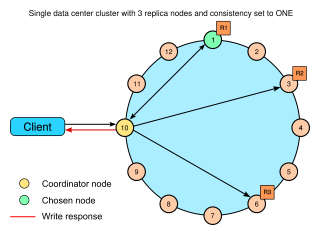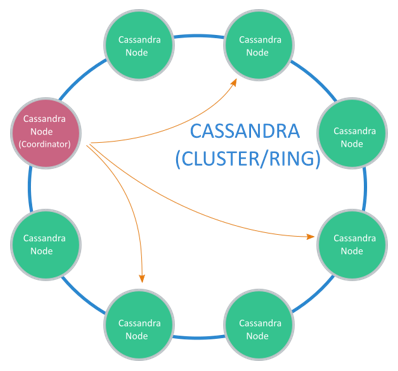One problem that may occur is that we simply can't store the data on one computer and/or we still need to search for things on this dataset. To solve this kind of problem, we may need distributed Not only SQL (NoSQL) databases, such as Cassandra. Cassandra supports data distribution on multiple systems where availability and performance are critical:


Cassandra tries its best to not have a single point of failure. For example, all nodes will act like a sort of master (there is no actual master) so that all nodes have the responsibility to handle requests and automatically distribute data between nodes, in some sort of high-availability backup.



